Italian soffritto is essential to many traditional Italian dishes and serves as a flavorful base for various recipes. Sometimes referred to as the "holy trinity" of Italian cuisine, soffritto consists of onions, carrots, and celery, which are slowly cooked in olive oil to release their nuanced flavors and aromas. This age-old preparation can transform your Italian kitchen, elevating favorite recipes such as stew, pasta and risotto dishes.
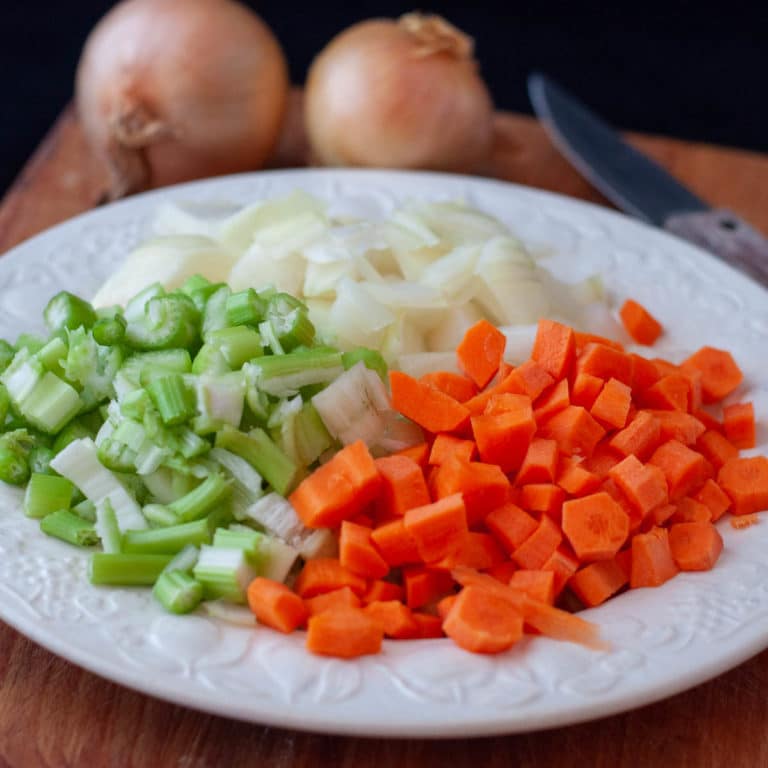
Jump to:
What is Soffritto?
Soffritto, meaning stir-fried, is a key ingredient in Italian cuisine.
It consists of a blend of finely chopped onions, celery, and carrots, laying the foundation for various dishes.
This aromatic mix of vegetables is slowly cooked in olive oil to create a flavorful and fragrant base for various Italian dishes, providing depth and richness to the overall taste.
In comparison to French cuisine, soffritto is similar to the French mirepoix, which also combines onions, celery, and carrots.
However, a French mirepoix is gently fried in butter and therefore has a richer flavor.
A traditional Italian soffritto instead fries the vegetables in olive, giving the vegetables a fresher taste.
Both methods are done at medium temperature to ensure the vegetables don't become overly browned or crispy.
When creating a big batch of soffritto, you can easily store it in the refrigerator or freezer to have a ready-to-use, flavorful base for your upcoming Italian recipes.
This versatile mix will elevate your dishes and bring a true taste of traditional Italian cooking to your kitchen.
In classic Italian cooking, soffritto is an essential part of several recipes, and mastering its preparation will significantly enhance the flavor of your Italian dishes.
This seemingly simple blend of aromatic vegetables is more than just a mix of ingredients; it's the cornerstone of delicious, home-cooked Italian food.
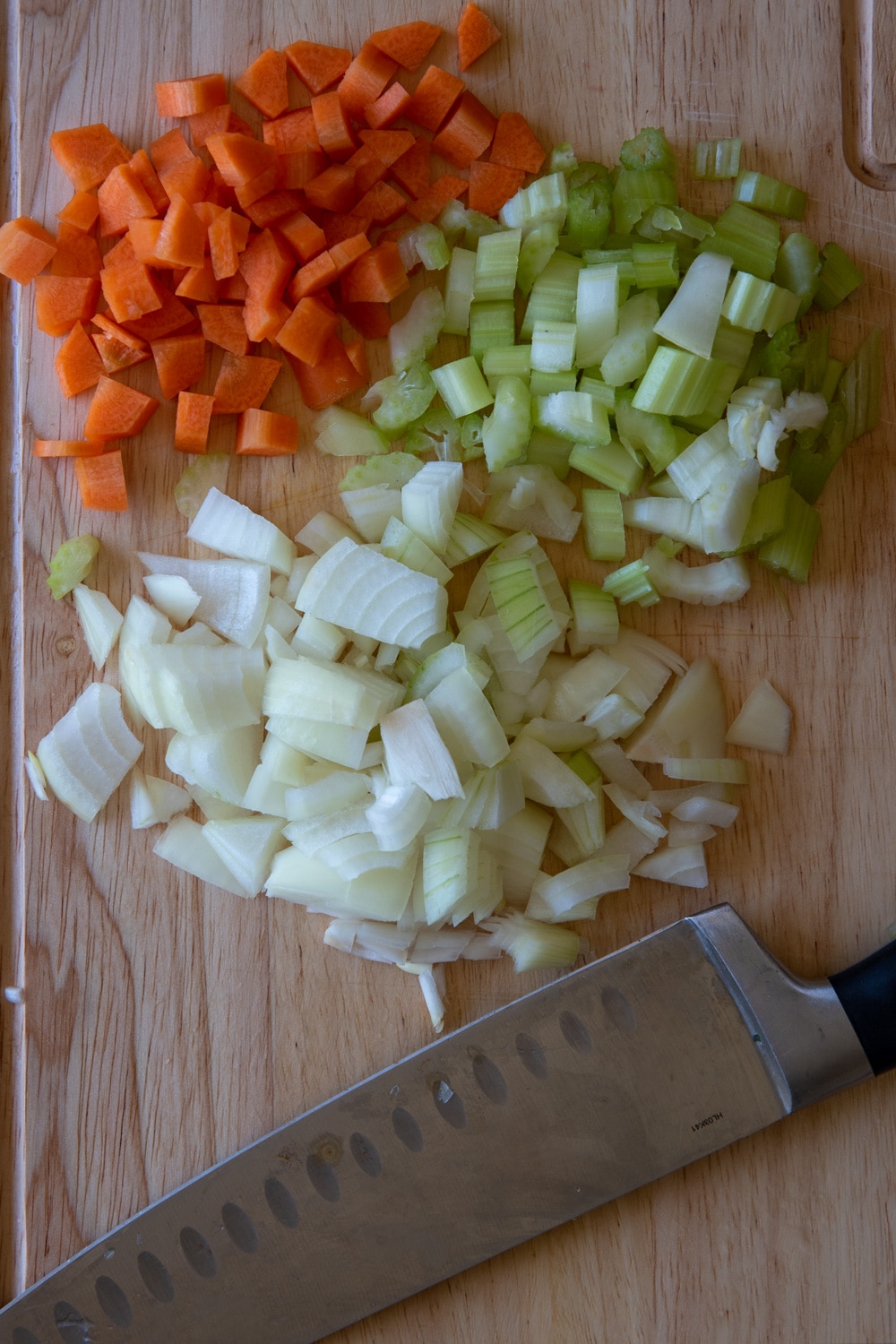
Basic Ingredients
When creating a traditional Italian soffritto recipe, there are a few key ingredients you should have on hand to make this flavorful base. To prepare your soffritto, here's what you'll need:
- 1 medium onion
- 1 medium carrot
- 1 celery stalk
- extra virgin olive oil
- salt
Maintaining a 1:1:1 ratio of vegetables is crucial, adjusting the quantities depending on the size of your vegetables.
Once a month, I chop a big batch of carrots, onions and celery and freeze them.
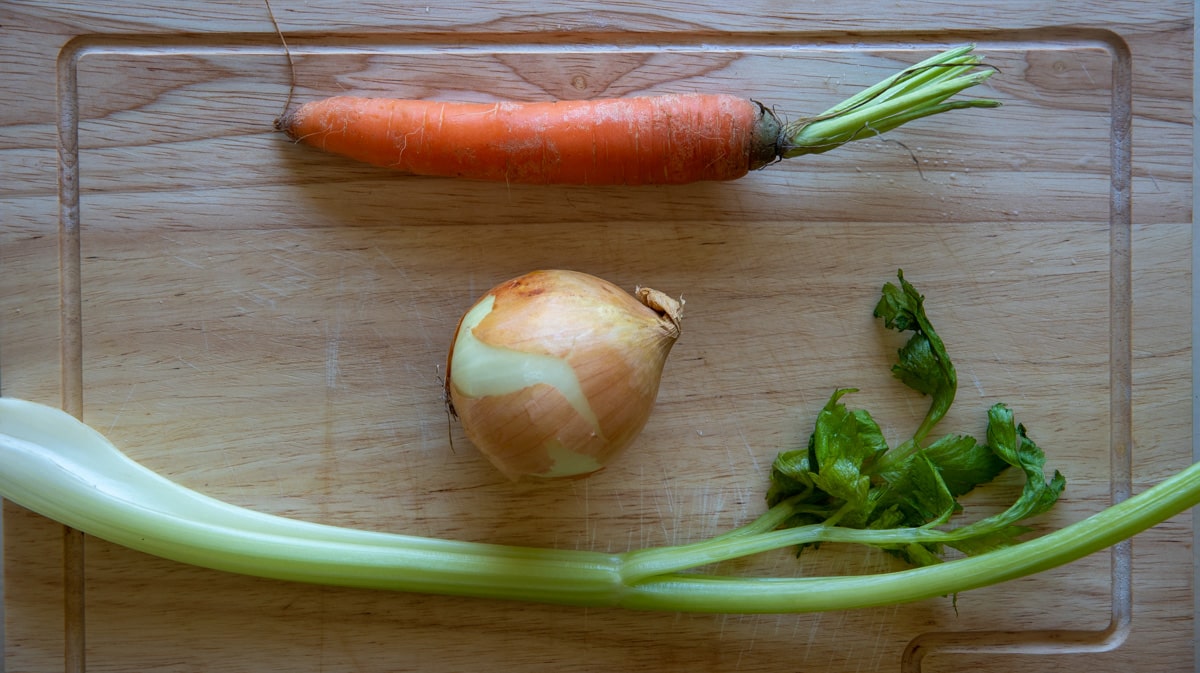
Best way to cut onions without crying
A month's worth of onions.....A lot of crying?
Not so much!!
I found the secret to reducing the onion effect.
When you clean the onion, leave the top as it is till the very end.
Only when you slice the top of the onion, you will start tearing.
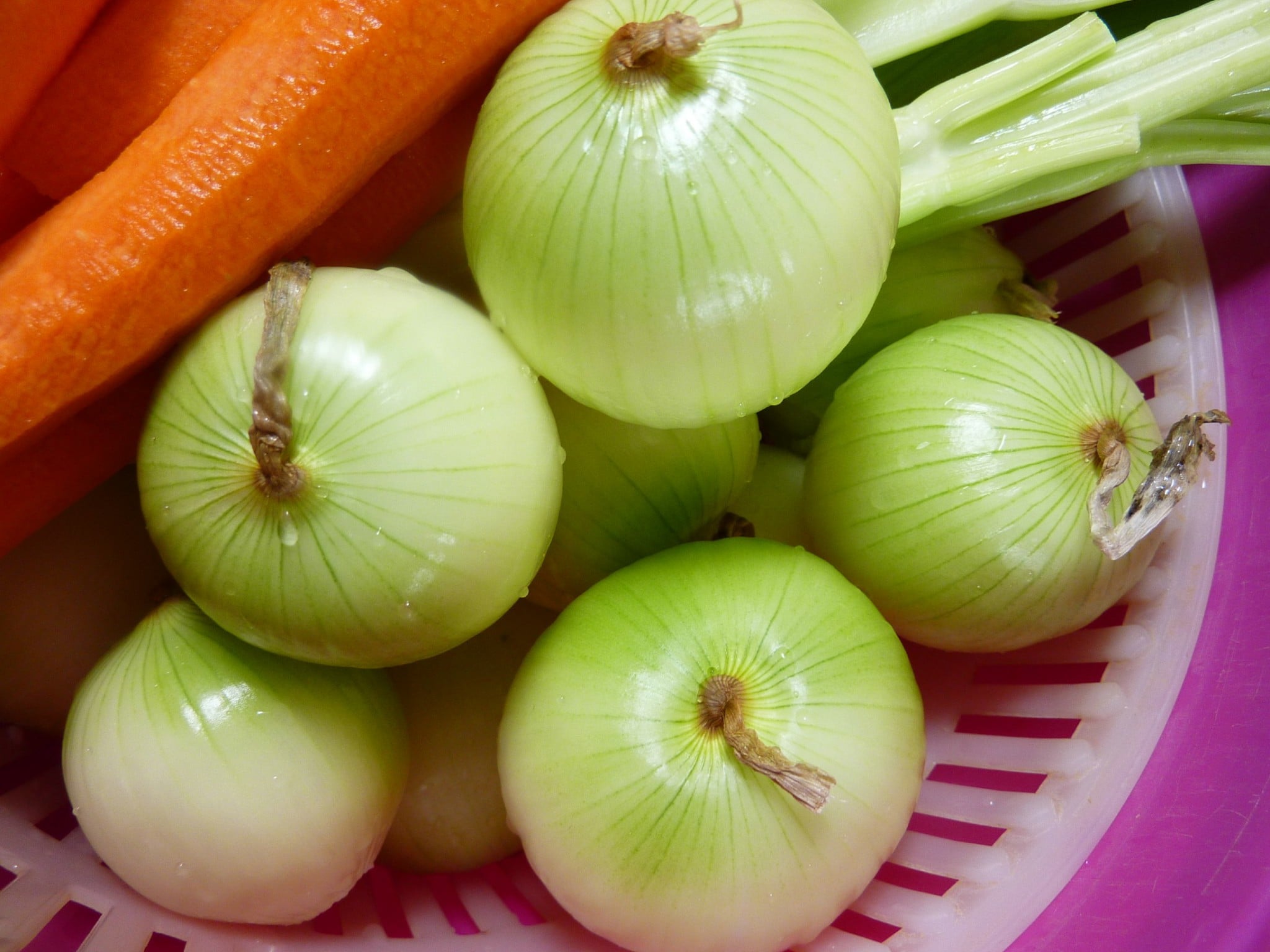
Instructions
Preparing the Vegetables:

- Peel the carrot and the onion
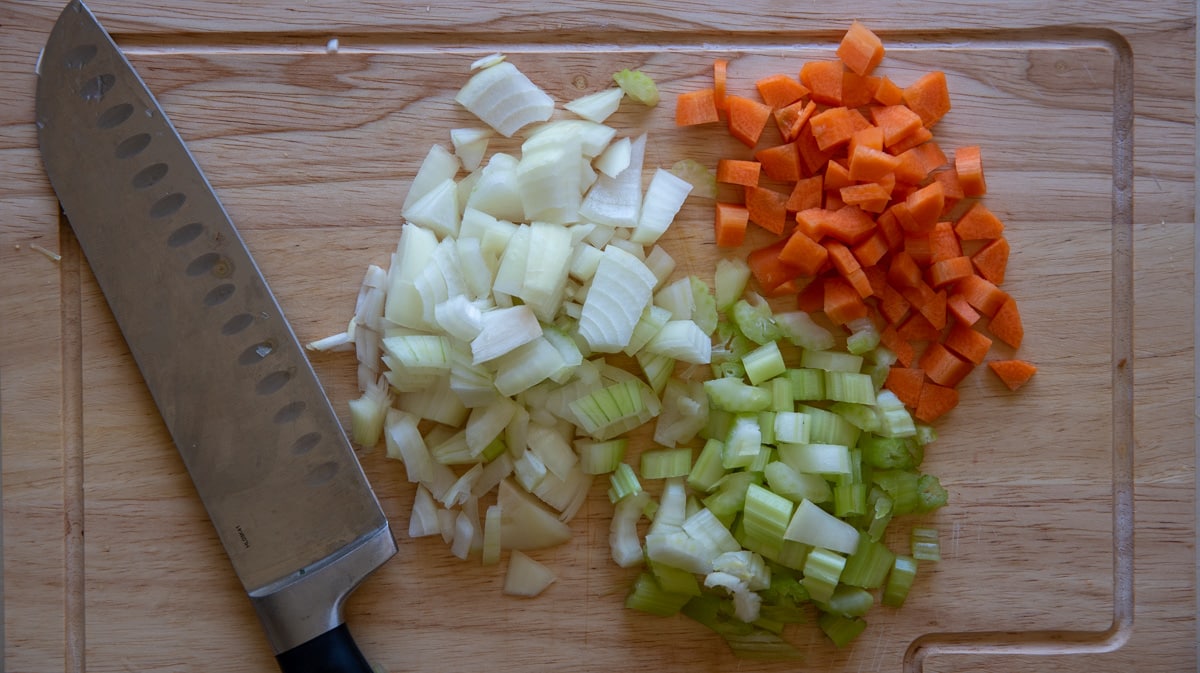
- Cut the vegetables with a sharp knife or mezzaluna to finely chop the onions, carrots, and celery.
Roughly or finely chopped
The finer you chop the vegetables, the better the flavors will meld together in your soffritto.
That is the preferred method for dishes that need to cook for a long time, like wild boar stew with chocolate sauce, or Daube Provencal or sauces like authentic Bolognese sauce or lamb ragu.
However, in some baked recipes like this Fish pie or beef sausage hand pie, it is nice to taste the little chunks of vegetables; therefore, roughly chopped vegetables would be more suitable.
You can use a vegetable shredder or a food processor if you want to save time and need finely chopped vegetables.

In some recipes, you may also find a Battuto, which is finely chopped soffritto with added fat like bacon or guanciale.
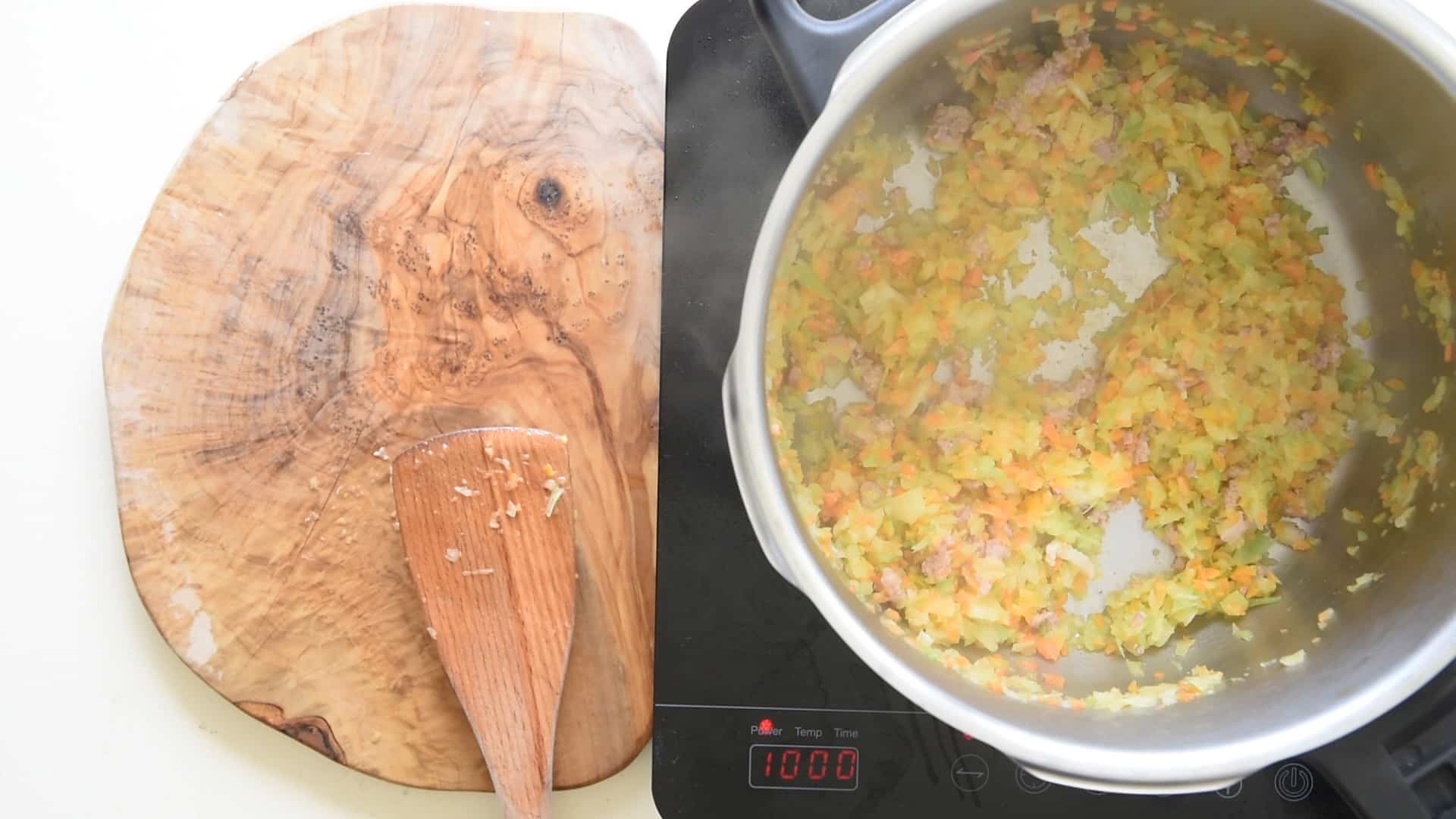
Sautéing the vegetables
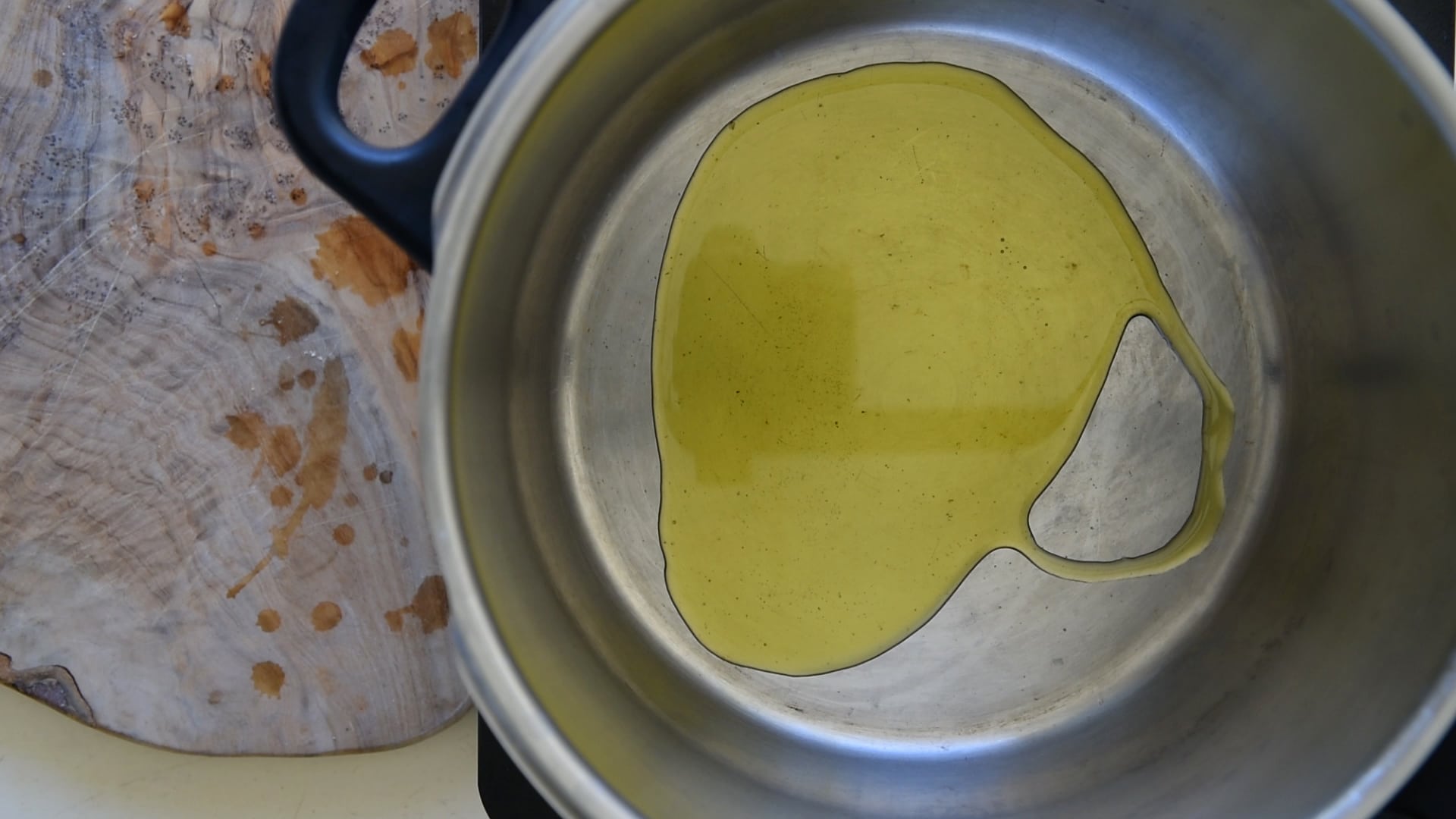
- In a large sauté pan, heat the extra virgin olive oil over low to medium heat.

- Add the chopped vegetables to the pan once the oil is heated.
Hint: for a richer flavor you can add some butter to the olive oil.
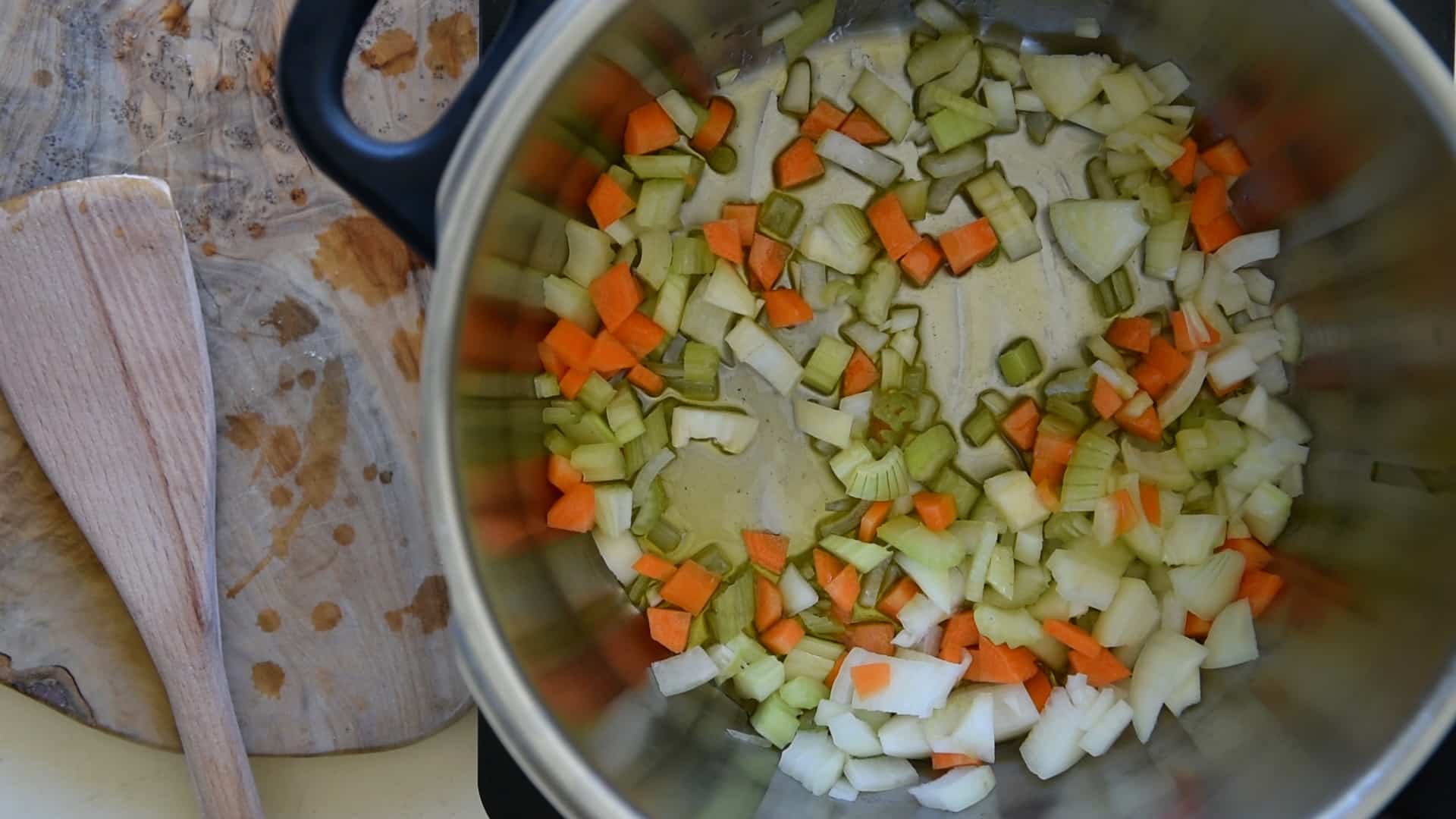
- Stir the mixture so the vegetables are well-coated with the oil.
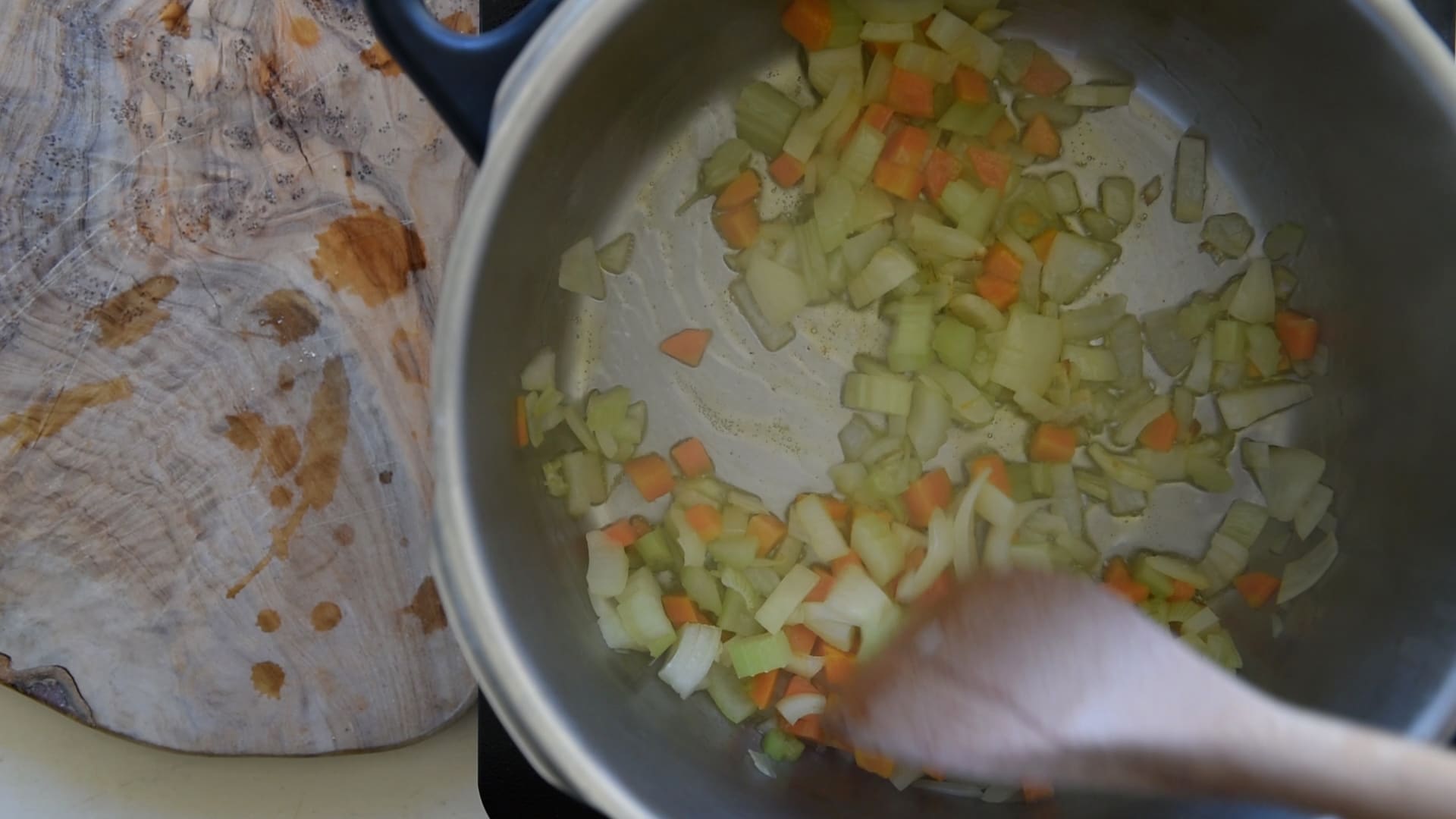
- Sauté the vegetables on low heat for 20-30 minutes, stirring occasionally
Hint: The goal is to cook the vegetables slowly, bringing out their natural sweetness without burning them.
Adding Other Ingredients and Flavors
While the traditional Italian soffritto consists of finely diced onions, carrots, and celery, you can also personalize it by adding other ingredients and flavors to enhance your dish.
For a richer and more aromatic soffritto, consider incorporating spices, fresh herbs, or even wine, depending on your preferences and the dish you are preparing.
Some sauces and stews benefit from the inclusion of garlic cloves, white wine, or even a bit of tomato paste for added depth and richness.
When using aromatic herbs, such as fresh basil leaves, make sure to add them towards the end of the cooking process, as they can lose their flavor if cooked for too long.
For instance, Italian parsley would be a natural choice when preparing pasta e fagioli, while thyme might be more appropriate for certain stews or sauces.
Lastly, don't forget you can also use a battuto as a base for your pot.
Battuto is a soffritto with the addition of fat like bacon or guanciale.
They are added to stir fry at the same time as the vegetables.
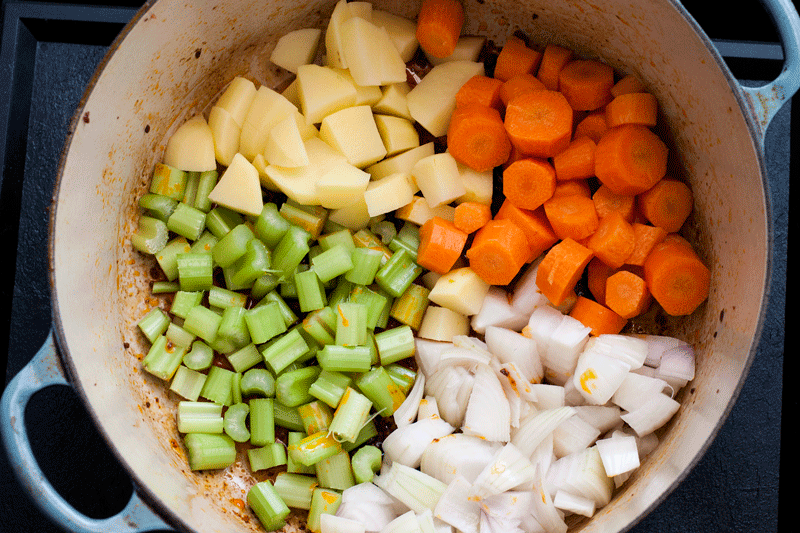
Incorporating Soffritto into Italian Dishes
When you master soffritto, you'll be able to elevate various Italian dishes with its rich and savory flavor as a base.
You can incorporate the soffritto in a range of meals, including soups like minestrone and pasta, sauces, stews, and risotto dishes.
In tomato-based dishes, you can enhance the taste by combining your soffritto with either tomato paste or tomato sauce.
This combination works wonderfully in creating a delicious and well-rounded flavor.
For a slightly sweeter approach, experiment with adding fresh or canned tomatoes.
There are many Italian dishes where incorporating soffritto will significantly boost the depth of flavors.
Some popular options include:









Neapolitan Soffritto is not what you think
Be very careful when you are in Naple and find a soffritto on the menu.
Soffritto Napoletano is a spicy stew made with offal, tomato, and bay leaf.
If pork heart, spleen, liver, and lung are not your favorite, you may want to skip it
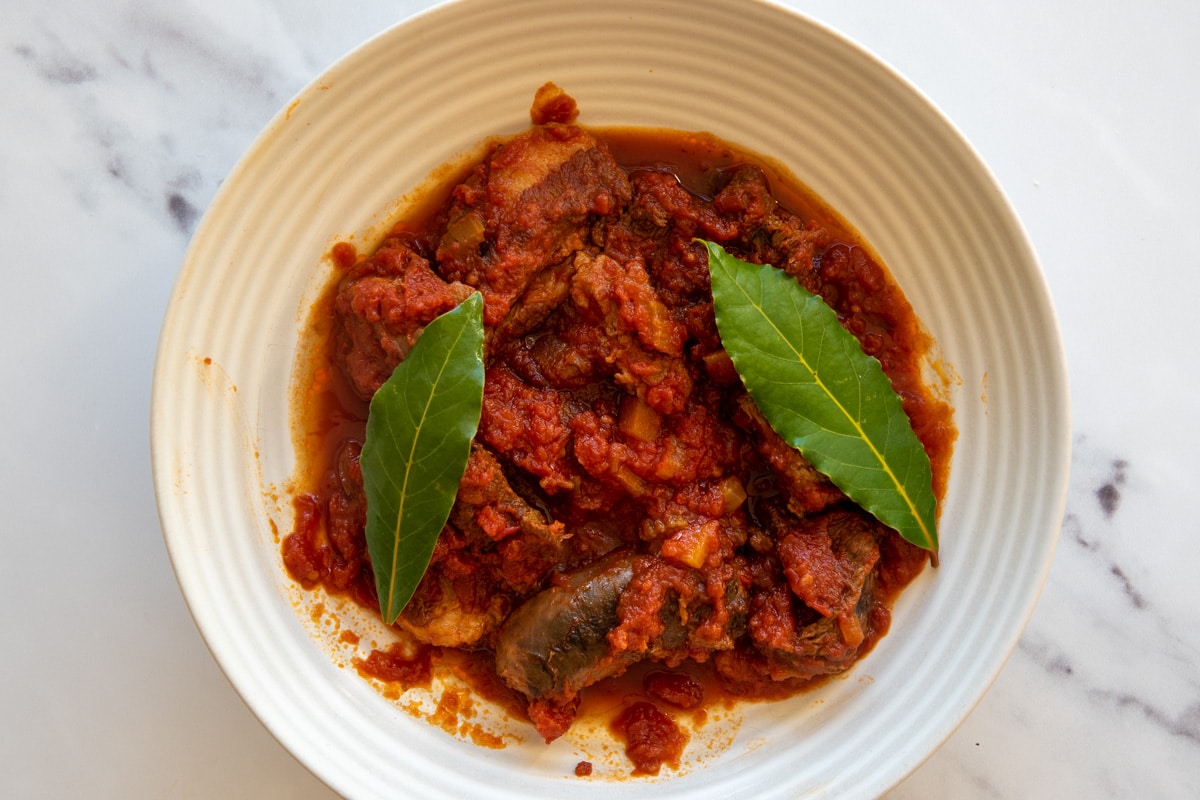
Storing and Freezing
Soffritto is essential to many Italian recipes, bringing a burst of delicious flavor to various dishes.
Knowing how to properly store and freeze soffritto can save you time in the kitchen and keep the ingredients fresh for later use.
You can store it in the fridge in an airtight container for up to 4 days.
Once a month, I like to prepare a big batch of chopped onions, carrots and celery, and freeze them uncooked.
You could also freeze your cooked soffritto, but I think the flavor of freshly cooked vegetables is much better.
To make it even more convenient, try dividing the soffritto into small portions.
I divide it into small plastic bags to have the portions I need.
I do not use ice cube trays because they are too small for a family meal.
Even if you cook for only one person, you would need at least 3 cubes as they reduce in size once cooked.
When the time comes to use your frozen vegetables, you can either let them thaw in the fridge or simply add it directly into the pan to stir fry.
Be careful, as the ice in contact with the hot oil will splatter.
Storing and freezing your soffritto properly will save you time in the kitchen, making meal prep more efficient and enjoyable.
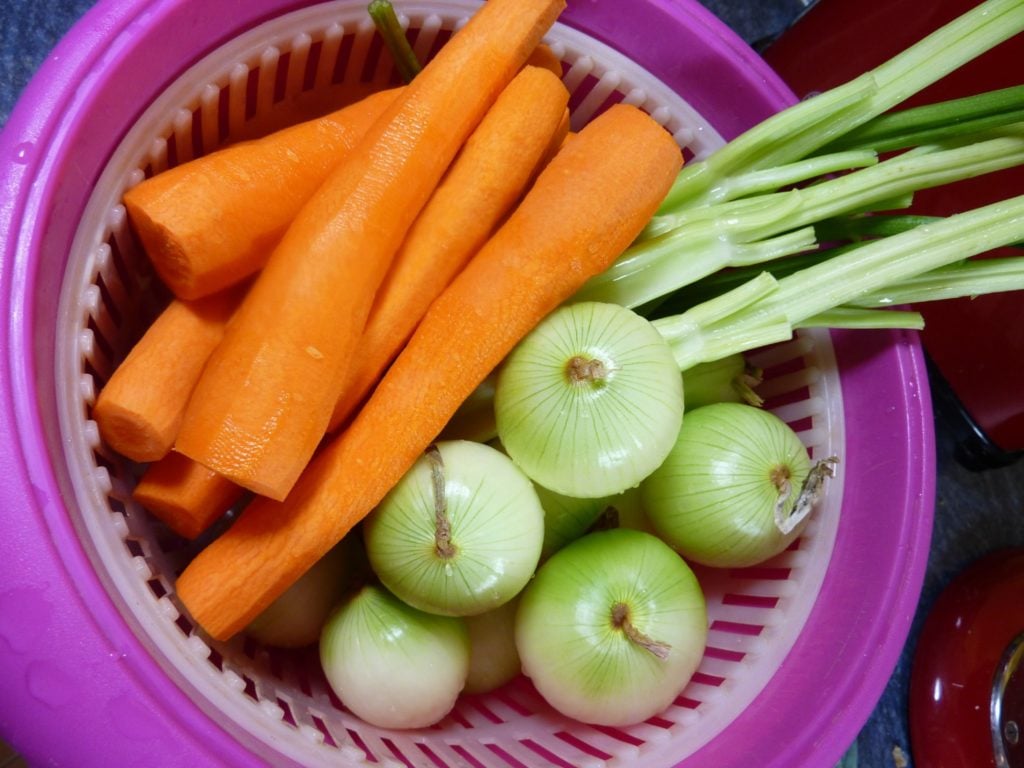
Preparing the vegetables and freeze them
With my KitchenAid Mixer, I use the slicer option for the celery and the shredder option for the carrots and onions.
Then I mix all the vegetables and put 3 tablespoons into small freezable bags.
I prefer to freeze small quantities and if I need more I can always take 2 bags.
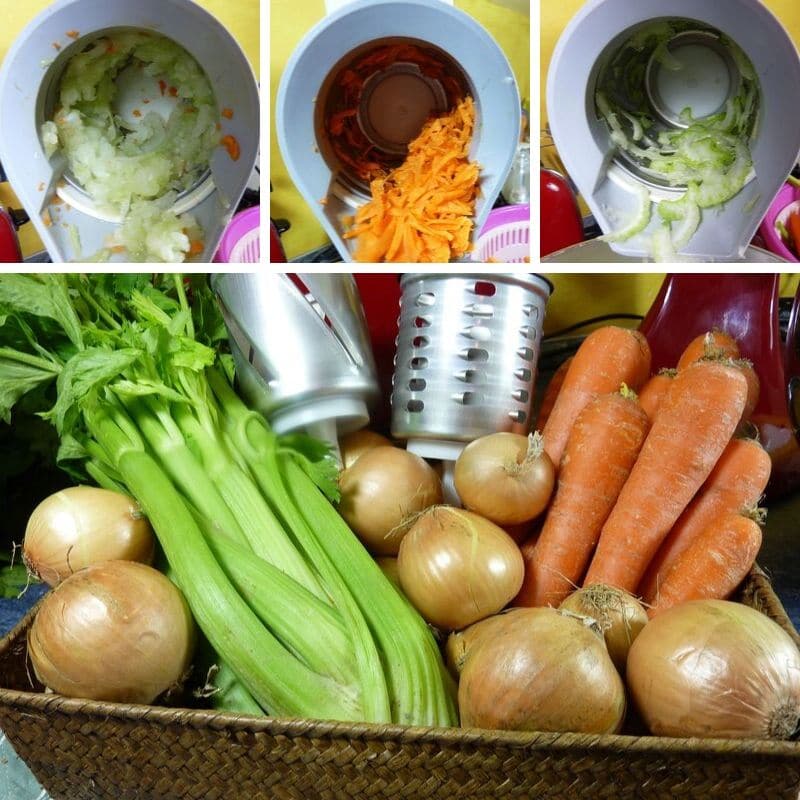
Freezing celery sticks
I also usually keep a few stalks of celery aside to freeze whole.
Why? Homemade stock or broth only calls for 1 stalk.
It doesn't matter if the celery is frozen as it is just for flavour and not for eating.
So, I keep some in the freezer to use as and when needed instead of buying a whole bunch each time.
It perishes way before I can use it up.

What else I put in the freezer
If you want to know more about what else I have in the freezer you can read the article: Once a Month Frozen Meal Prep.
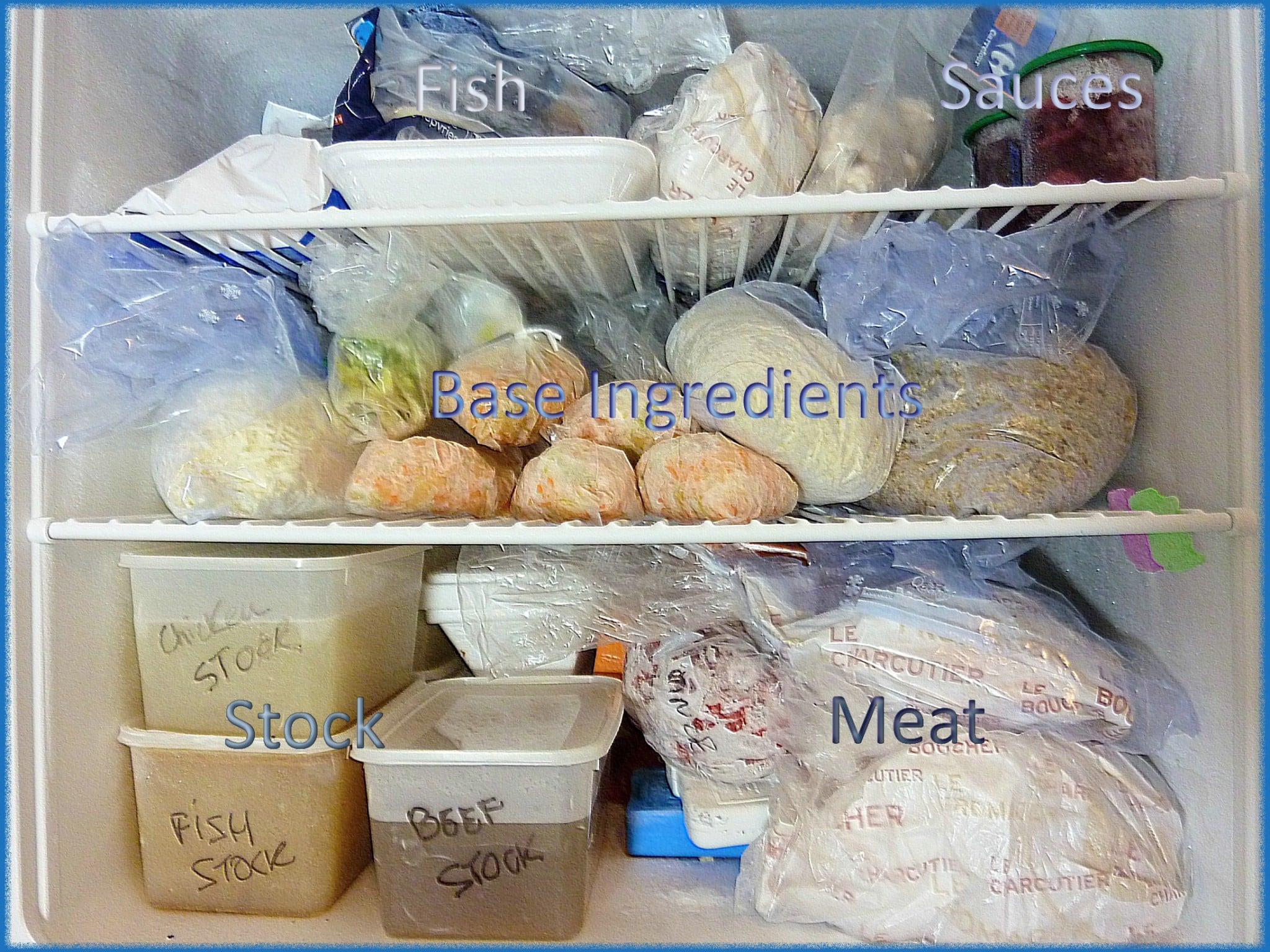
Tips and Tools
- When making a classic Italian soffritto, start with fresh vegetables as they provide the best flavors. You'll need onion, carrot, and stalk of celery in a ratio of 1-1-1 (one parts onion, one part carrot, and one part celery). However, these proportions can be flexible, and different amounts of each vegetable work just fine too.
- To prepare the vegetables, finely mince them to create a consistent, well-blended mixture. This will ensure the aromatics cook evenly and release their flavors effectively. The right tool for this task is a sharp chef's knife or a food processor, both of which can make quick work of chopping the vegetables.
- Heat some extra-virgin olive oil or butter in a wide pan, as this will ensure that the minced vegetables cook evenly. Keep the heat low, as the key to a perfect soffritto is slow, gentle cooking. You want to brown the vegetables, not fry them. Patience is essential during this process to extract the umami-rich flavors that will form the base of your dish.
- Consider adding herbs and other ingredients to enhance the flavor of your soffritto. Some common additions include garlic, parsley, rosemary, sage, and bay leaves. Keep in mind that these variations depend on the specific dish you're preparing or your personal taste preferences.
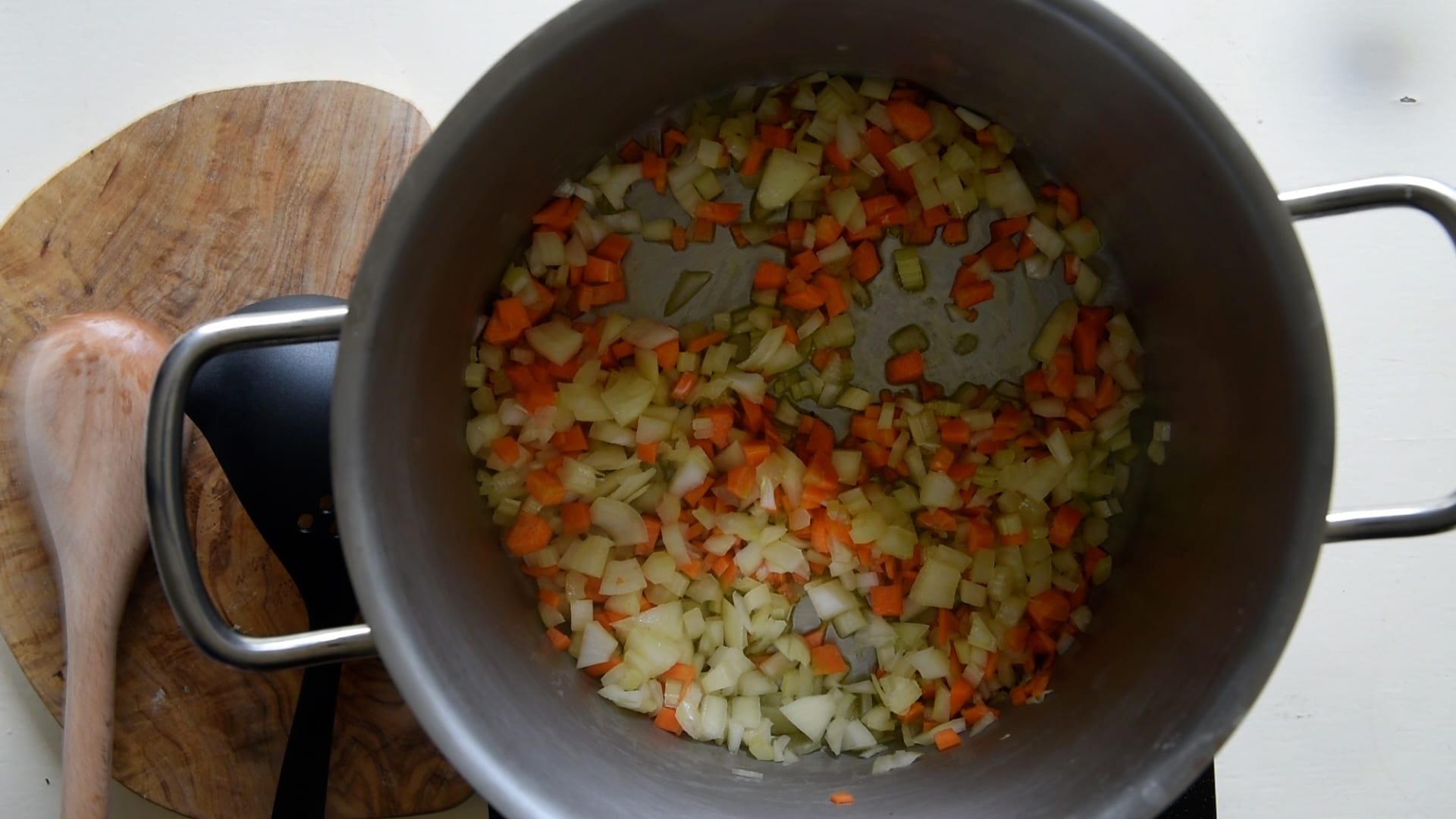
FAQ
To make a soffritto-based pasta sauce, first prepare your soffritto by dicing onions, carrots, and celery in equal parts. Gently fry the vegetables in olive oil until soft and fragrant. Next, add crushed tomatoes, and your choice of fresh herbs like basil or parsley. Simmer the sauce on low heat for at least 30 minutes, allowing the flavors to meld. Finally, season with salt and pepper to taste, and toss with cooked pasta.
Soffritto is a versatile base that can be used in various Italian dishes, such as pasta sauces, risotto, soups, braised meats, and stews. Its rich and flavorful profile enhances the taste of these dishes, providing a solid foundation for other ingredients.
Soffritto's unique quality stems from its simplicity, showcasing the fresh flavors of onion, carrot, and celery with a balance of herbs and olive oil. This combination acts as the foundation of many Italian recipes, providing depth and complexity that is distinct to Italian cuisine.
Yes, there is a difference between soffritto and mirepoix. Both utilize onions, carrots, and celery as a base, but the primary distinction lies in the cooking method. Soffritto is gently fried in olive oil, while mirepoix is sautéed in butter. This difference in fats lends unique flavor profiles to each, making them distinct in their respective culinary traditions—Italian and French.
Sofrito is similar to soffritto, but it originates from Spanish and Latin American cuisines. While soffritto features onions, carrots, and celery, sofrito typically includes ingredients like bell peppers, tomatoes, and garlic. The preparation method also differs, with sofrito often being puréed or finely chopped. Additionally, sofrito may include various herbs and spices, depending on regional preferences.
What recipes do you make with Italian soffritto? Leave your comment below I would like to hear from you. You can find more delicious ideas if you FOLLOW ME on Facebook, YouTube, or sign up to my newsletter.


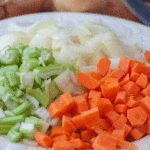



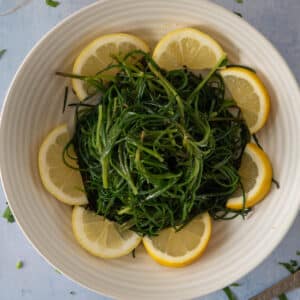
Margene Yoho
I actually would rather pull out the food processor or Nutrabullet to do my kitchen work than I would use one of these clunky old things. I’ve never actually been able to use one without worrying about grating my fingers or knuckles alongside my food.
Laura
I definitely agree with you